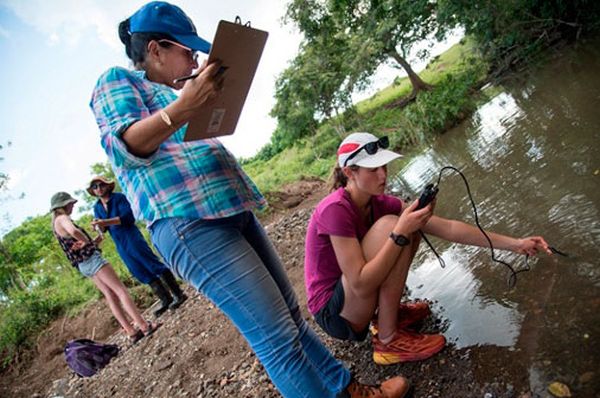
Researchers from the United States and Cuba concluded the second soil erosion sampling campaign in the province of Pinar del Río, Cuba´s westernmost province.
The expedition lasted several days and its members collected samples of water and fluvial sediments, in order to determine the presence and quantity of chemical elements in the soils, said Maikel Hernández Núñez, a specialist with the Center for Environmental Studies of Cienfuegos (CEAC).
They applied erosion quantification techniques in the study area and compared them with the results of previous investigations, carried out by Cubans, on soil losses in the karst regions. In natural surface waters, they measured physical-chemical parameters in situ, and carried out chemical and biological tests as well.
The operation allowed the monitoring of 20 points in the western region and consolidated the work in groups of Americans and Cubans, as well as training and skills in sampling and measurements and even created conditions for the application of these methods of erosion study in the karst regions of Cuba, he added.
He said its effects will serve the national plan, especially concerning the protection of soils and water, because it will provide a diagnosis of erosion in the sites studied, as well as water quality, related to the deposition of sediments originated in erosive processes and the presence of associated pollutants, concluded Sibello Hernández.
This second campaign followed the first of its kind in August 2018 in the central provinces of Cuba, and the tests carried out both in CEAC and in foreign laboratories will allow inter-comparisons to be carried out, which will serve to control the quality of the analytical results.
The U.S. group was led by Dr. Amanda Schmidt of Oberlin College and Dr. Paul Bierman of the University of Vermont, and included four other researchers from these institutions.
CEAC is attached to the Ministry of Science, Technology and Environment, dedicated to the study and solution of environmental processes and is recognized by the International Atomic Energy Agency as a Regional Reference Center in the application of nuclear techniques to the solution of specific problems of integrated coastal management.
 Escambray ENGLISH EDITION
Escambray ENGLISH EDITION





Escambray reserves the right to publish comments.